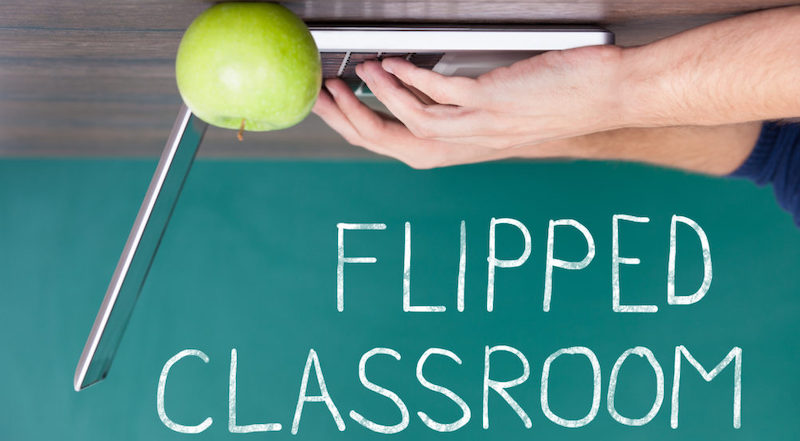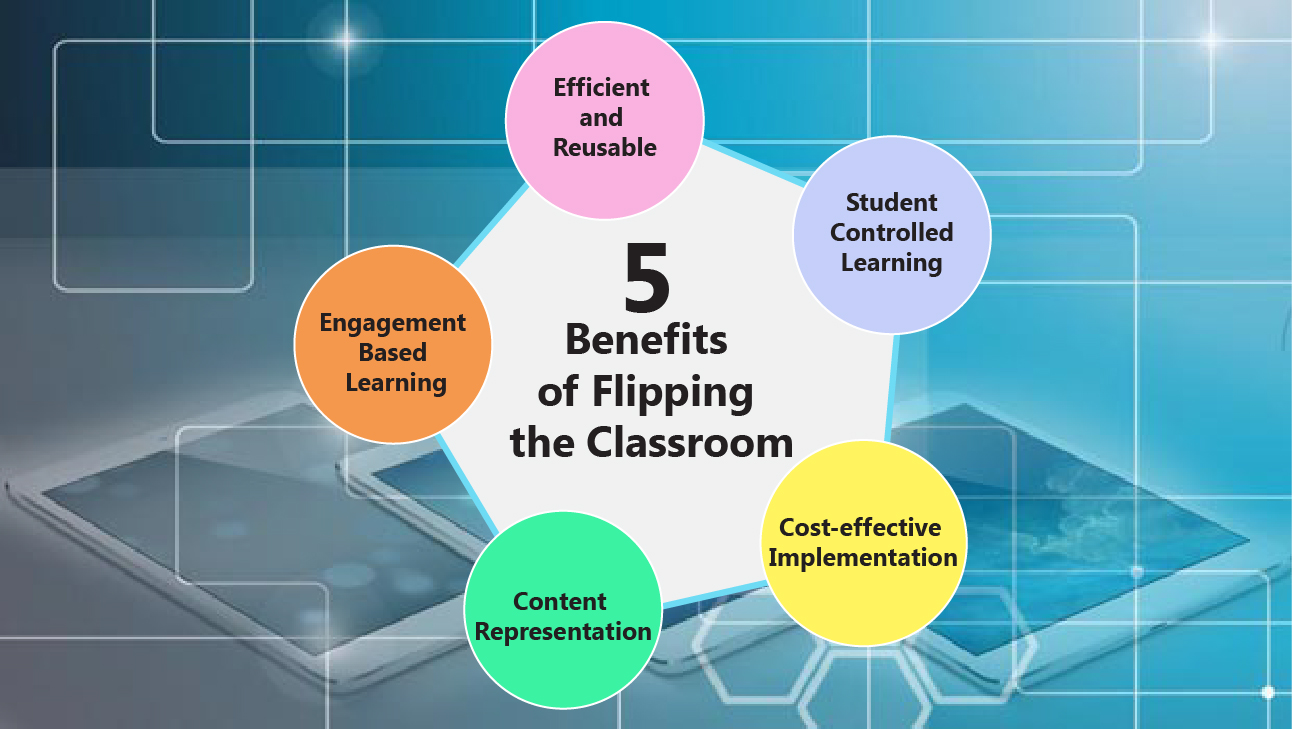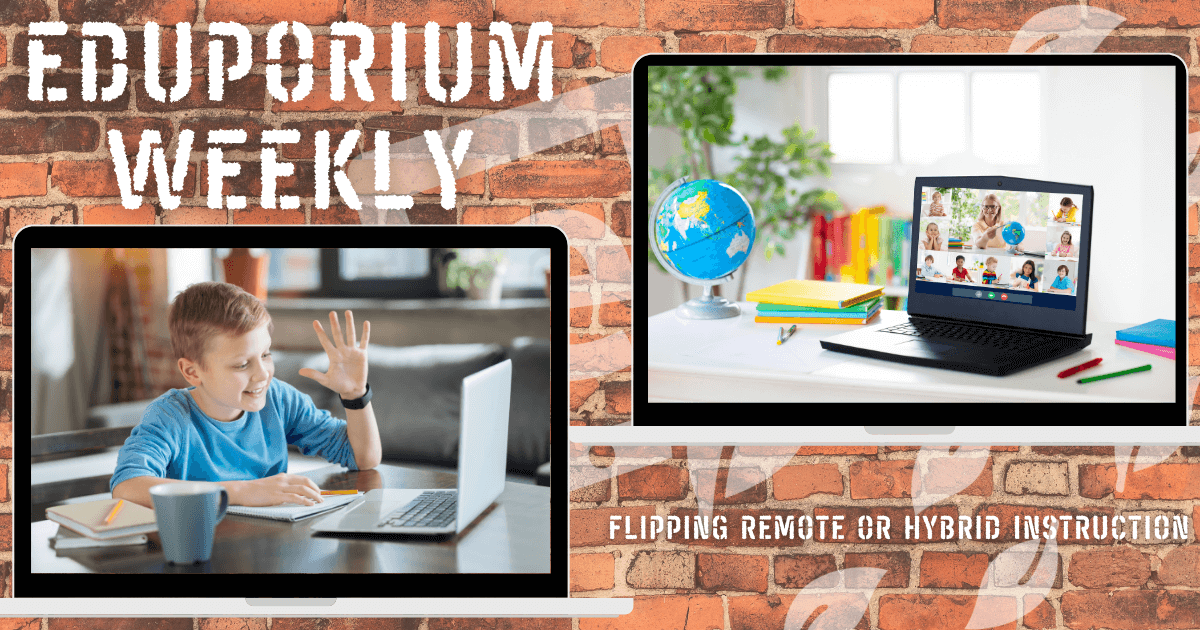The flipped classroom approach has been used by educators for a while. In certain situations, it works very effectively for engaging students and allowing them to work independently. Flipped learning refers to a pedagogical approach in which students learn a lot of the concepts they need to know on their own, making them familiar with new things when they return to their class. And, instead of doing homework assignments independently, they complete them with teachers, who are there to help them progress through it. Flipping the classroom helps students move more at their own pace—only taking the time they need to learn something. They can also utilize teachers or peers for help right then as opposed to putting work down, forgetting about it, and then asking the next day. But, how could flipped learning help in remote settings?
Let’s Talk About Flipped Learning
Before we get into how flipped learning could be a pedagogical asset for teachers, let’s first unpack what the term means a bit more, specifically in the remote era. Some teachers, parents, and students simply think about flipped learning as students doing homework at school and school work at home, but there’s more to it than that. The flipping isn’t done just for the sake of switching things up. It’s a purposeful approach to teaching and learning. When the classroom is flipped, teachers are able to utilize certain teaching strategies when they’re with their students that they otherwise might not be able to. Flipped learning usually involves students reading text or watching videos outside of class and then taking part in a discussion, answering questions, writing essays, or completing other projects once they return as a group.
There is an important acronym when it comes to flipped learning and it’s pretty easy to remember. Often referred to as the four pillars of FLIP, remembering these letters is helpful. Keep a flexible environment, focus on the learning culture, deliver intentional content, and remain professional. So, that’s Flexible, Learning Culture, Intentional Content, and Professional. Let’s start with flexibility. Flipped learning allows teachers to try many different instructional modes and they often rearrange their teaching spaces to allow for different things (not so relevant in remote learning). Setting up the classroom environment to cater to specific lessons, units, or themes is a common and smart idea. Namely, it allows students to learn where they want to. As for learning culture, educators need to flip from a teacher-centered model to a student-centered one. Class time should be for exploring topics in-depth and encouraging students to participate in and evaluate their learning.
Flipped learning can help students understand key concepts and procedures for solving problems. Oftentimes, it’s left up to individual teachers to determine what they need to teach, allowing for them to be intentional in the material they deliver. Being intentional allows the learning to remain student-centered and active. Finally, being a professional educator is more than it seems and involves greater demands in flipped learning. Teachers need to be constantly observing all students and providing feedback that’s relevant in the moment. They also need to be reflective by assessing both student work and their own practice. Educators often provide feedback to each other as well and it’s important that they’re all receptive to critiques. Above all, teachers are the essential factor in successful flipped learning.
Types of Flipped Classrooms in Remote Learning
Since there are a lot of educators still making use of hybrid and remote learning, we thought it would be relevant to discuss some of the different types of flipped learning. There are five main types of flipped learning (and probably some other niche areas as well). They include standard flipping, one-day-a-week flipping, selected-content flipping, flipping without recording, and full hybrid flipping. Let’s go through each so you can learn if any are aligned with your teaching style and intentions. Within the standard model, lectures are always recorded and students watch them asynchronously. This is a strategy teachers can utilize in a hybrid model. Then, during class time, they'd take part in interactive and structured activities. And, guidance from teachers ensures key concepts are understood.
One-day-a-week flipping is a more specific area that sounds exactly like how it works. If educators feel standard flipping is too overwhelming, they can start with flipping lessons one day per week. This would work in a hybrid or fully remote situation because students could spend their time away from the rest of their class watching videos and discuss them once they’re back together. Selected-content flipping, on the other hand, involves educators recording lessons. They're often on some of the broader topics they intend to cover with students learning the basics on their own. This is then coupled with introducing more complex topics when everyone is together. That allows for students to ask questions and enables teachers to check for understanding. If teachers notice that students are routinely getting stuck on any particular topics, they can try designing lessons around those particular areas for everyone to explore together in class.
Then, we have flipping without recording lectures. Though recording lessons is a big part of most flipped learning, it is not a necessity. It is a time-consuming process and one that does have some simple alternatives. Teachers can find video content or reading materials on the Internet and share the corresponding links with students rather than creating their own content. Finally, full hybrid flipping entails completely eliminating some synchronous lectures and replacing that time with students completing online activities. This might involve watching previous lessons or having an opportunity to ask questions. Teachers can also utilize secondary resources if they don't have the time or capacity to record content themselves.

Flipping Instruction in a Remote Situation
We know that every remote learning situation is slightly different for teachers and students in almost every school. Educators are using different meeting platforms whether it’s Zoom, Google Hangouts, or something else. This means they have different options and limitations when it comes to what they can do. Some instruction may include an entire class of 25 students while, in other instances, teachers may meet with smaller groups. If a teacher feels comfortable doing so, they could also record lessons ahead of time. They could play them for students during a meeting or email them to everybody to watch after the class meeting. Besides that, there are a couple of other options to try.
Some teachers have found success using Zoom breakout rooms, which allow for one-on-one or smaller group discussions. Zoom polling can also be effective since it allows teachers to pose questions and get students discussing among themselves. Then, there’s collaborative educational tools, like Google Docs, which can help teachers facilitate collaboration in remote learning. Students can work together in real-time and collaborate on whatever the assignment is for the day. As it pertains to flipped learning, this can be done during the actual class meeting or after the class has ended as a homework assignment (this would work best with older students who wouldn’t need as much guidance from teachers). And, as with anything else, once they get used to this method, students will become more comfortable and proficient with collaborating in this way.
When it comes to flipping instruction, educators who are new to this teaching method can benefit from trying different approaches. Experimenting can help them figure out what’s most effective both as a whole or when working with individual students. Starting with smaller integrations of flipped learning can help teachers ease into the process. This helps students get more comfortable with what’s expected as well. Once teachers become more comfortable with the various tech tools and the learning environment, they can start adding additional features and more student collaboration. When it comes to using videos for instruction, multiple short videos can be more effective than one long one. Students today want to receive information quickly and lose interest with every passing second. So, make sure to cover the important topics right away, include guiding questions, and give students the chance to reflect.
Why Flipping Might Help
There are a lot of different remote and hybrid learning possibilities that have been rolled out. Just because hybrid learning is taking place for students in one school doesn’t mean it's the same everywhere. Since there are so many variations that come into play, teachers have undoubtedly tried different hybrid approaches and seen different outcomes. One thing we can suggest, however, is that flipped approaches are strategically beneficial to both teachers and students. Teachers have adapted instructional practices regardless of how they've been teaching. Leveraging content students can explore on their own is still a worthwhile attempt that meets academic needs.
Flipping hybrid instruction involves presenting students with important information outside of scheduled class meetings and, since remote classes tend to be on the shorter side, short videos with important information can help teachers save time. Theoretically, they can upload these videos to their LMS or email them out to students so that they know what concepts they’re responsible for learning. In this case, concepts are briefly explained and students learn the important lessons by completing their assignments. This reserves class time for teachers to allow students to apply their skills, collaborate, or lead a discussion. Teachers can work on creating short videos that cover the important learning outcomes for students. They can then have them work on applying them through their assignments.
There are also certain instances when flipped instruction in remote learning is beneficial. When lessons require directions or for the teacher to explain it, creating and uploading a video can save time. Teachers can also create videos to introduce students to new skills, providing examples and leaving them with some things to ponder before the next class meeting. This can be an opportunity for students to reflect on previous related lessons and see if they can draw some important connections based on what they learn from the videos. Basically, it comes down to this: If flipping instruction is intriguing to the educators teaching remotely or in a hybrid model, start by asking if a video can be created to cover this particular topic as opposed to using class time on it.

Challenges to Flipping the Classroom
Flipping the remote classroom can have its perks, but it’s still a lot of work. It also involves teachers placing more trust in their students. The most common downside to attempting to flip instruction is the possibility that students won’t do the prep work. Whether it’s because they're unable to access a computer, the Internet, or the content or because they have nobody pushing them to do so, this has been the reality. Also, some students simply learn differently, including those who have trouble focusing and those who need constant monitoring to ensure they’re doing anything at all. Ultimately, students need to complete their work regardless of when—even if they do so in their own way. Even though the teacher’s goal is to create less work and more fluidity, this won’t always be the case, but students shouldn’t simply skip assignments.
If this occurs, the solution is for them to complete work they were supposed to do outside class during the class. This works better for in-person meetings, but it's feasible remotely, too. In a remote situation, the teacher may need to schedule one-on-one time with the student to ensure they complete assignments. During a physical meeting, however, the teacher could work with the student while others work on something else. It's nearly impossible for a teacher to teach most of the students in a class remotely while also making sure that the others are catching up. The positive is that, when seeing students complete the work, teachers at least know that they have tried. Hopefully, they also understand what they need to know, especially if it's a few days before they see each other again.
It likely hasn't been perfect, but, this way at least teachers know that the students are doing at least some of what they should be. We've even read about teachers having students call parents to let them know they didn’t do the work. This can apparently be a good motivator to decrease the chances of it happening again. It also goes a long way when independent learning experiences are fun for students as opposed to something they just have to get done. Like we said, videos are an option as long as they grab students’ attention, but other activities can work, too. Various challenges, puzzles, games, or riddles can help keep them interested. These can also increase the chances they complete their work and absorb what they need to know.
If you’ve tried flipping hybrid or remote learning, let us know! We’d love to hear how it's been. You can send us a message on Twitter or through our contact form. For the latest EdTech, STEM, and 21st century education news, follow us on Twitter and Instagram, like us on Facebook. Or, sign up for our newsletter for announcements on the best EdTech deals around!




2 Comments